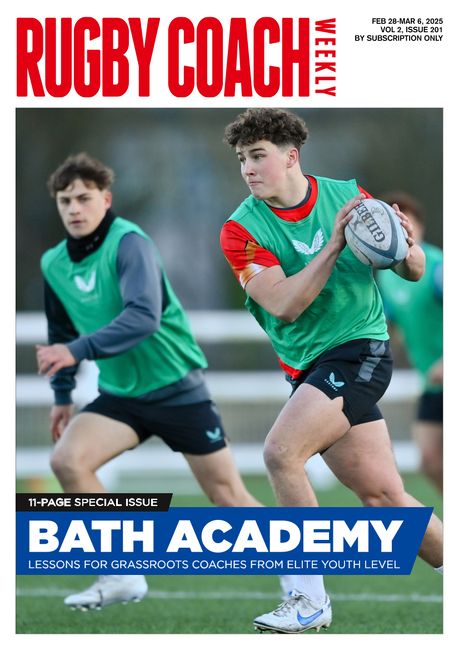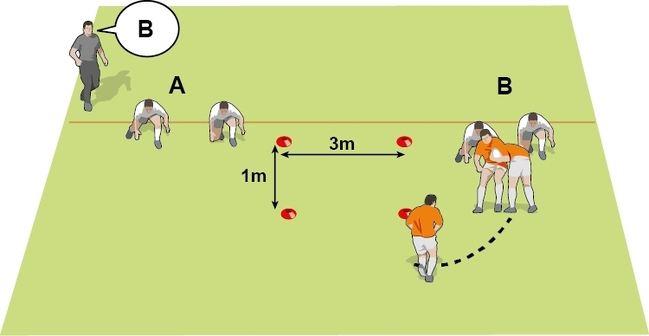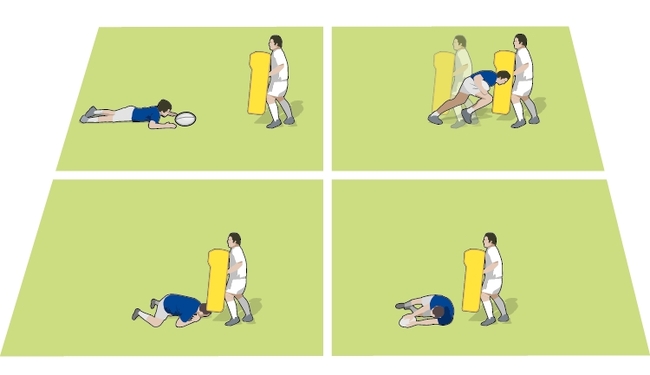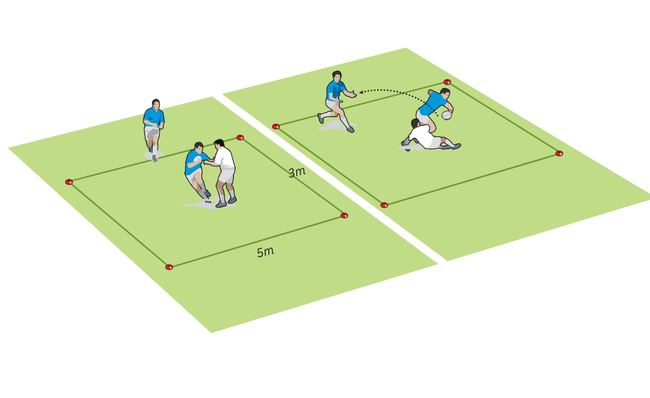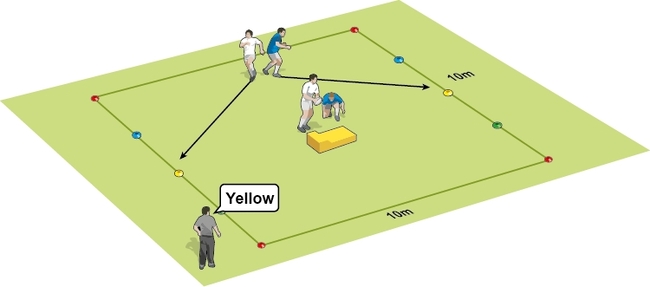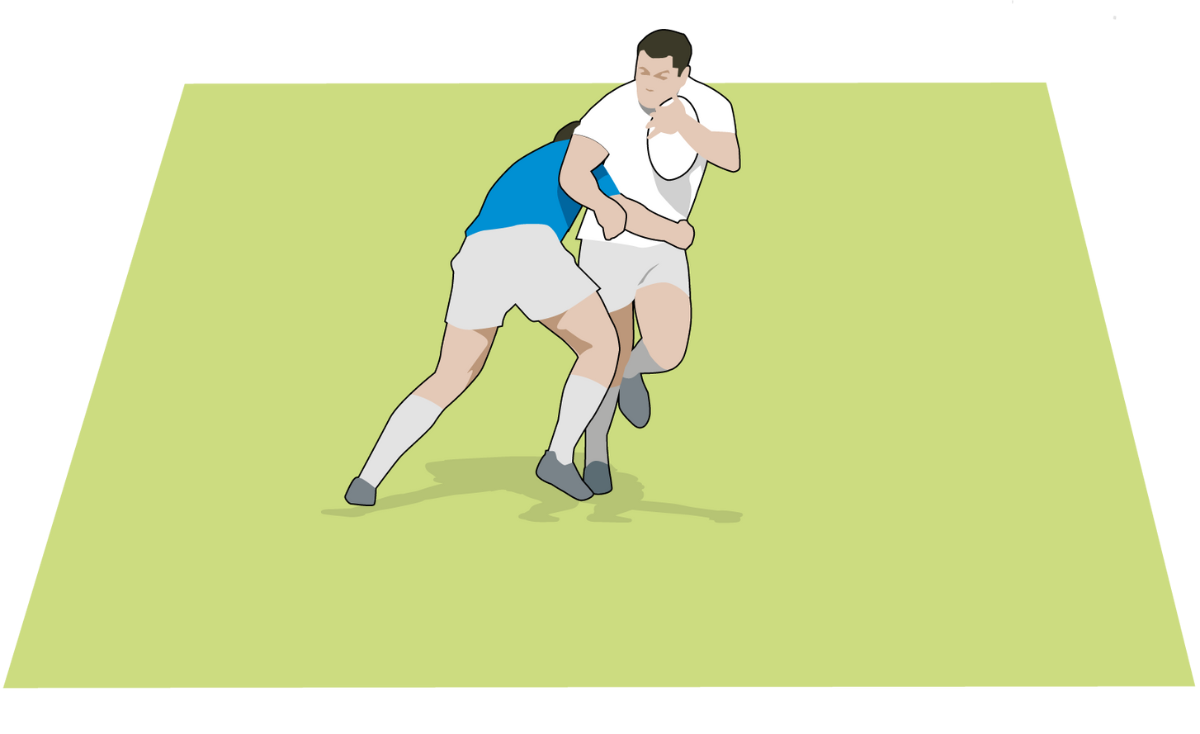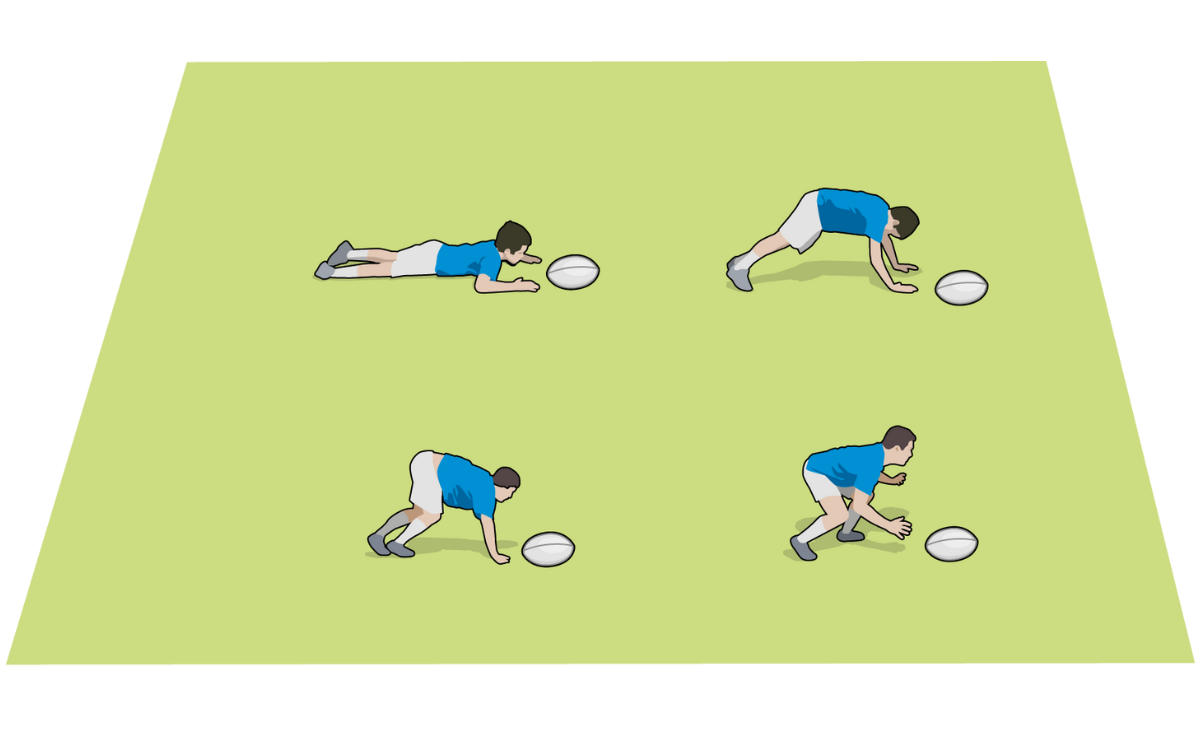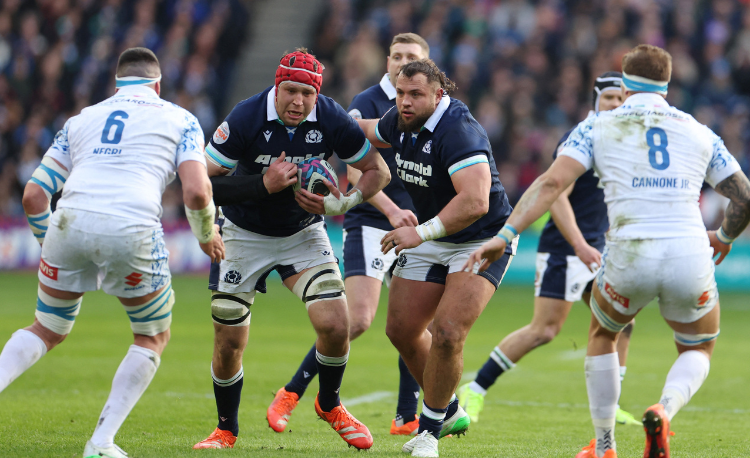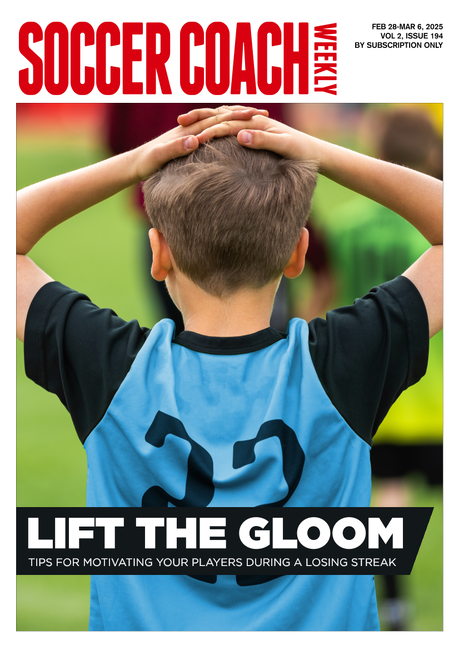Using science to adjust the way you set up your maul
Rucking & Maulingby Doug McClymont
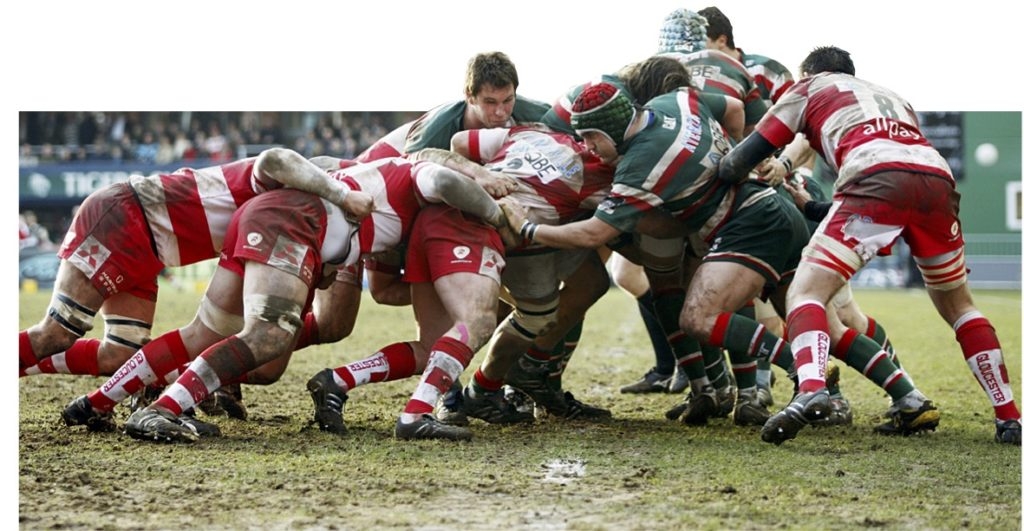
The maul is a dynamic contact situation which occurs mostly from lineouts. There are lots of “coach” theories on how to set up and drive forward from a maul, some of which you might use. Now add the science to help you work out what works best for you.
SKILL AND TACTICAL IMPROVEMENT FOR MAULS
Key factors
- Horizontal forces win metres
- To drive forward, you need to convert the vertical forces into horizontal forces
- Being forced upwards reduces the forward force
- The side that drives closer to horizontal wins the maul
- Disrupt an attacking maul by forcing the front rank to stand up
- Unity is paramount – better to be a unified mass in the maul
- Use “mechanics” to soak up and then push back with more force
FORCES IN THE MAUL
The maul is really just a ruck with the tackled player being held up off the ground. Players from both teams consequently are on their feet and in the biomechanically unenviable position of trying to apply horizontal forces from a vertical position.
The team in possession attempts to maintain a unified mass in which players are physically attached to each other and it is intended that the combined mass behaves as a single entity with the ball carrier behind and protected by others of that team. The opposing team attempts to push them back by applying forces in the opposite direction, or to disrupt the integrity of the maul.
THE ATTACKING TEAM IN A MAUL
For the side in possession of the ball the most important aspect of the maul is the integrity of the combined mass of players. Strong contact is maintained just as in the scrum, with a solid grasp of the next man, usually his jersey and as in the scrum either across the back or between the legs. But the prime object of the maul is forward progress and the application of force, as in the scrum, should be as close to horizontal as possible.
The strongest position from which to apply a force is feet parallel, turned out to gain maximum friction, spine in line, and major leg joints around 120 degrees. However, the maul makes progress forward and feet must be shifted as the players “walk” the mass down field. This process necessarily reduces that horizontal force - angles change and as one foot then the other is moved forward then as each is moved force application is reduced accordingly. The same applies if feet have to be moved back when movement forward ceases.
THE STRONGEST BODY POSITION IN A MAUL

The strongest position from which to apply a force is feet parallel, turned out to gain maximum friction, spine in line, and major leg joints around 120 degrees. As the player moves his feet, his strongest position is lost for that moment. Also if he drops his shoulders below his hips, he loses his horizontal force.
In this “best practice” maul the forces applied using basic scrum techniques ensure that the forces applied to the ground are used against the opposition. The major point here is the influence of the angle of the applied force. If the feet are parallel and the force is applied through the line of opposition force then maximum force is applied and it’s a head-to-head contest.
But, in most cases, the defensive opposition is not in the perfect horizontal spine-in-line position and so the resisting forces are not horizontal and the angle of the resisting force has an upward component.
There are two advantages here.
1. The group with the greatest horizontal component applies more force in the direction of progress, and if the defender’s applied force has a vertical component then his torso will not be horizontal.
2. This second situation provides the attacking player with the opportunity to get under the torso and force the defender upright, thus rendering even less effective his horizontal application.
DISRUPTING THE MAUL
The players of the defending team know that the greatest forces must be applied in a horizontal direction and through a tight combined mass, like a scrum. They also know that if they allow themselves to be pushed up anywhere near vertical, they are unable to apply any significant forces to the opposition. Consequently the defending team in a maul must endeavour to remain well bound and in a position as close to horizontal as possible. However, they also know that the same vertical position that would allow them to be pushed around also applies to the attacking team!
In every maul there are players in direct contact with the opposition, players who are trying to either force the defender backwards or stand them up. But two can play that game. If a defender is in direct contact with the opposition he can choose, instead of pushing against him, to stand him up. This can be done by getting a shoulder under the opposition chest or shoulder and lifting, or simply use his hands to lift him into a standing position - then that man loses his ability to push forward.
LIFTING UP A PLAYER IN A MAUL - LEGALLY

A bonus too is if the man “stood up" is bound to another then either some of the strength of that bond will be broken and/or the other man might be partially stood up too. Once they are stood up then it’s much easier for the defender to force his way between them, thus disrupting that row and reducing further their ability to move forward.
There is another row of players of course, but the stand up process can be repeated and within a short time the integrity of the rolling maul has been compromised and the man with the ball, who is usually not pushing at all, might find himself in contact with the opposition, and instead of a maul we now have a tackle situation and a ruck.
SUMMARY
- Strongest position is with spine-in-line and feet parallel at optimum angles.
- If there is movement forward or back then feet parallel becomes ineffective when movement made in either direction so there is a trade off.
MECHANICS OF SOAK UP AND SOCK IT TO THEM

In attack or defence players in a maul may find themselves being overwhelmed – pushed backward - so this is a good time to remind us of basic muscle biomechanics.
The greatest force generated by a muscle is in absorbing forces, known as eccentric action, where the muscles are being stretched by opposing forces. The next strongest position is plyometric where there is no movement of the muscle in either direction, neither eccentric or concentric, and the weakest force we generate is when the muscles are contracting.
So, just like arm wrestling, let the other guy have a little, then resist with the strongest force, hold, then push back quickly, with a maximum effort for longest time.
Newsletter Sign Up
Coaches Testimonials

Gerald Kearney, Downtown Las Vegas Soccer Club

Paul Butler, Florida, USA

Rick Shields, Springboro, USA

Tony Green, Pierrefonds Titans, Quebec, Canada
Subscribe Today
Be a more effective, more successful rugby coach
In a recent survey 89% of subscribers said Rugby Coach Weekly makes them more confident, 91% said Rugby Coach Weekly makes them a more effective coach and 93% said Rugby Coach Weekly makes them more inspired.
Get Weekly Inspiration
All the latest techniques and approaches
Rugby Coach Weekly offers proven and easy to use rugby drills, coaching sessions, practice plans, small-sided games, warm-ups, training tips and advice.
We've been at the cutting edge of rugby coaching since we launched in 2005, creating resources for the grassroots youth coach, following best practice from around the world and insights from the professional game.

